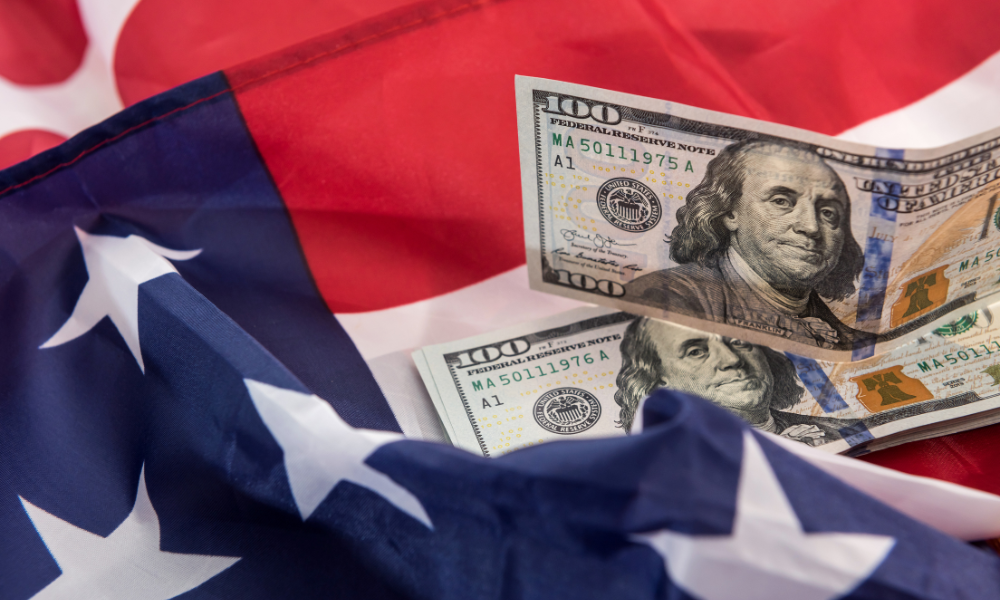PIMCO's latest 6-12 month outlook shows signs of diminishing US exceptionalism, promise of fixed income upside

The US economy has been the exceptional outlier of the post-pandemic era. Its consumers offered the greatest resilience in the face of both high inflation and rate hikes. Its GDP growth numbers consistently surprised to the upside, as did its CPI prints. Its equity markets, too, led performance across the globe. According to PIMCO’s latest 6-12 month outlook, there may be signs that US economic exceptionalism will begin to flag.
That normalization should come in part due to the digestion of US pandemic stimulus, the lagged impact of interest rate increases, and the improving outlook for other developed economies. Tiffany Wilding, economist at PIMCO, explained how these forces may impact the US economy and drove home the view that normalization does not mean the US economy is headed for a severe downturn. She outlined some of the risks now present for the US economy as well as reasons for investors to remain optimistic. She highlighted that within this landscape she sees significant opportunities for fixed income assets.
“We would argue this is a very opportunity rich environment for fixed income. That's because central banks had to get policy into restrictive territory in order to cool their economies down, but now that their economies are looking more like 2019 than they have at any point since the pandemic, you should see central bank rates now coming back to looking more like 2019,” Wilding says. “As you get those cutting cycles, that just tends to be a good environment for bond returns. Our view is that you're going to have soft landings and that central banks will be able to ‘stick’ the soft landing. But even historically soft landing cutting cycles have delivered positive returns for bondholders.”
Wilding contextualizes US exceptionalism in recent years by highlighting the scale of US stimulus. The United States delivered more stimulus as a percentage of GDP than other developed economies. The result was a longer growth period and a greater accumulation of US household wealth. Now, however, interest rates are beginning to bite and that stimulus has been almost fully digested. Wilding still believes that the US has advantages in technology, capital expenditures, capital formation, and productivity. However, she sees other economies catching up.
The looming US election presents some degree of risk for the US economy, however Wilding accepts that the two candidates are largely agreed on a policy of deficit spending. She sees the US government in a state of structural deficit around 6.5-7 per cent. While high, she expects that there will be some stability in US government deficits. Longer-term, however, Wilding sees a high degree of unsustainability in US debt levels which may force a reconsideration of certain areas of non-discretionary spending like social security and medicare. In the short to medium-term, however, Wilding sees US government debt levels as neither a headwind nor a tailwind.
Alarming US debt to GDP levels have had some analysts predict that credit markets could revolt against the US, similar to the market rejection of the UK budget under Prime Minister Liz Truss. While Wilding accepts there is a risk of that, she views it as far less likely because of the core place of the US economy and US currency in global markets. Moreover, she notes that US spending is not actually at magnitudes higher than other developed economies. Rather, it tends to tax less than its counterparts. If debts become unmanageable, the revenue lever could also be pulled on.
Looking within the US bond universe, Wilding says that PIMCO views ‘structural curve steepeners’ more favourably. These five-to-seven year duration bonds are sitting in a sweet spot in her view. That’s because she expects some risks of underperformance in the 30-year bond. Those more medium-term bonds, she says, can help hedge out some of those risks. That said, she believes the broad range of bonds look quite attractive, especially relative to today’s high equity valuations.
In the normalization of the US economy, the resurgence of other developed markets, and the opportunity set now present in bonds Wilding sees a return to the ‘precedented times’ that so many individuals and investors have been hoping for.
“Well, we're back in precedented times, but the bond market has not exactly priced that yet,” Wilding says. “So we see this as an incredible opportunity to get into the bond market now with still elevated yields. Because the bond market will normalize eventually, and as investors, you don't want to wait for that to happen.”



